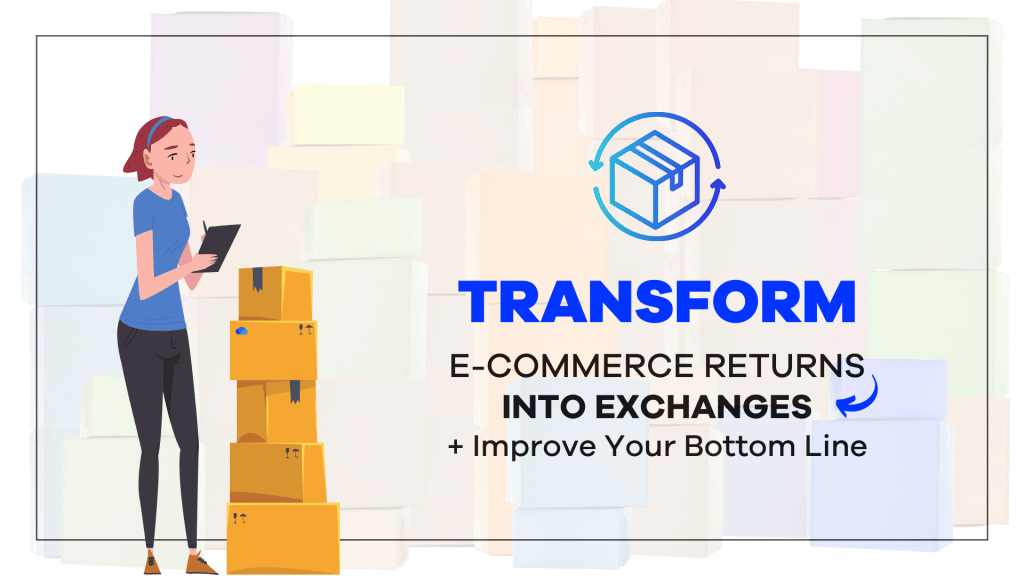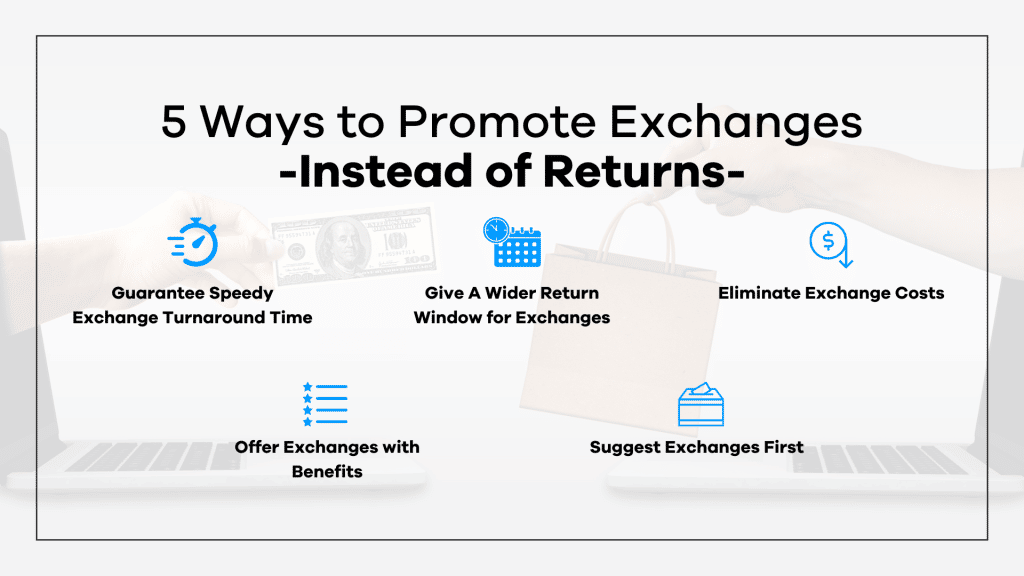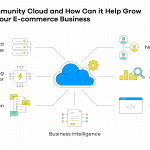
- Product exchanges help ecommerce businesses retain revenue while improving customer experience.
- Descartes Sellercloud’s Orderback allows ecommerce sellers to create a white-labeled customer portal and simplify the returns process.
When you sell online, returns happen. According to research by the National Retail Federation, “As a percentage of sales, the total return rate for 2023 was 14.5%.” That means that part of running an ecommerce business is accepting that RMA requests are coming.
However, a return does not have to automatically drag down your profitability. While refunds, return shipping, and return processing costs can turn a sale into a loss, you can minimize or outright eliminate that loss by issuing an exchange instead of a refund.
You need efficient and responsive return protocols and a purposeful strategy for convincing customers to give your products a second chance. That’s why we introduced Orderback, your business’s very own white-labeled self-service portal.
In this article, we explain why having a plan for handling returns is important, how to transform returns into exchanges, and how Orderback makes it easier.
Have a Plan for Managing Ecommerce Returns
An adequate returns strategy is one of the pillars of a successful omnichannel ecommerce business. You need a reliable RMA workflow to initiate, receive, and process returns quickly and cost-effectively. Without this, it doesn’t matter whether customers want a refund or an exchange.
This means devising a clear, intuitive policy on your own first-party sales channels that instills customer confidence in your brand. You need to show that you stand behind your products and services and are dedicated to making things right if they go wrong.
Customers also need to know that you are open to accepting returns and exchanges and committed to making the process as simple and intuitive for them as possible. However, there are often specific expectations for responding to customer returns. In some cases, returns are authorized automatically.
Compliance with marketplace terms of service for returns is critical in keeping your seller accounts in good standing and maintaining access to marketplace customer bases. Furthermore, customers who have a smooth refund or return experience with your brand are more likely to buy from you again.
In contrast, customers who have negative experiences are likely to never purchase from you again. This is important to get right because customers who repurchase from your brand will spend much more over time than customers who only purchase from you once.
According to a report titled ‘The Value of Online Customer Loyalty And how you can capture it’ by Bain & Company, “the longer their relationship with an online retailer, the more customers spent in a given period of time.”
Offering Exchanges Helps Retain Revenue
Offering exchanges instead of returns is not just about making customers happy. It is also about retaining your revenue. When a sale becomes a refund, that is lost revenue.
Returns cost your business because you must ship the product back to the warehouse, and refunds mean sending the money back to the customer. An additional cost you may encounter is the condition of the returned product. You may have to sell it as ‘second-hand’ or ‘open box,’ or if it is damaged, you may need to fix it and sell it as refurbished.
Assessing the condition of the return takes time and often means selling the product at a lower price than if it were new. Turning a refund into an exchange mitigates this loss because you have still managed to sell a product, and you don’t have to send back the full price of the original item sold.

5 Ways to Promote Exchanges Instead of Returns
A refund request is one of the worst possible end results for an ecommerce transaction. It means that you have let a customer down in some way. It doesn’t matter if it’s disappointment in your merchandise, an order processing error, or poor customer service. The purchase did not meet expectations, and you might not have another chance to make things right.
This outcome means the loss of an individual sale and likely means that you have eliminated your prospects for repeat business from the customer, as explained above. Customer loyalty is essential to any ecommerce growth plan; refund requests are a sign that you likely still need to earn that trust.
Exchanges, on the other hand, are a far superior outcome. When customers are willing to exchange a purchase for another product, they are showing a willingness to continue engaging with your brand despite an order not going as hoped. This doesn’t happen automatically. You need to ensure that people know exchanges are a viable option and that the process is simple.
There are several ways to make this happen:
1. Guarantee Speedy Exchange Turnaround Time
If customers decide to return an item, they have already waited for their initial order to be fulfilled. Return and exchange shipping times add to the time customers have to wait to get the exact product they want—possibly even the specific merchandise they wanted in the first place.
If customers aren’t willing to wait any longer, they may choose to order from a competitor or pursue an alternative from a brick-and-mortar store. Offering instant exchanges can drastically cut down on customer wait time.
Consider offering to send out replacement merchandise once returns have been shipped rather than waiting for returned products to show back up in your warehouse.
This speeds up the exchange turnaround time, and if you use a fast shipping option, the exchange should be fulfilled faster than if the customer decided to purchase from a competitor.
2. Give A Wider Return Window for Exchanges
Having an exchange window longer than a refund window can be a way to steer dissatisfied customers toward replacing products rather than opting for cash. A wider exchange window gives you the double benefit of demonstrating faith in your products and increasing the likelihood that a return will become an exchange instead of a refund.
You could also consider a hybrid approach, in which returns for site credit are still available after the refund window closes. This opens the door for future engagement and offers the same profitability benefits as an on-the-spot exchange.
3. Eliminate Exchange Costs
Some ecommerce marketplaces and webstores require customers to pay for the privilege of returning merchandise. These fees can include return shipping costs, restocking fees, and shipping for the resulting exchange. In some cases, these fees are dictated based on the reasons why a customer is initiating their return.
Removing some or all of these fees from the equation increases the likelihood that a customer will opt for an exchange. Again, the main benefit of an exchange to you, the seller, is that you can continue your engagement with an active customer. Remember, the more positive these engagements remain, the better the odds are that you are cultivating a long-lasting customer relationship.
Removing additional fees, even though it may have a short-term impact on your profit margin, can pay off as a long-term strategy if it leads to recurring sales and increased buyer confidence in your brand.
4. Offer Exchanges with Benefits
Sweetening the pot with discounts or free product upgrades can influence dissatisfied customers to accept an exchange instead of a straight refund. Customers feel their concerns are being addressed and gain additional purchasing power by sticking with your businesses instead of looking elsewhere.
5. Suggest Exchanges First
It may seem obvious, but customers looking to return an item may not even realize that an exchange is an option. Make it a point to promote the visibility of your exchange options and incentives anywhere a customer might visit in their pursuit of a refund. This includes any returns-focused pages, and anywhere you publish your returns policies.
Also, be sure to consider and surface suitable exchange options for customers. For instance, if a customer returns a pair of shoes, offer alternative sizes, colors, and designs in styles similar to the original order.
If a customer returns an electronic device, show alternatives with comparable features and functions. By eliminating the need for a shopper to dive back in and search your catalog for a desirable replacement, you reduce the number of clicks required to initiate and complete an exchange.
Convenience alone can make a massive difference in deciding what type of return a customer will accept. Descartes Sellercloud is committed to helping you deliver products and a first-class online shopping experience to your current and future customers.
Returns will happen even with a robust omnichannel growth platform at your fingertips.
Make Exchanges and Returns Easier with Orderback
At Descartes Sellercloud, we know how vital a strong reverse logistics plan is for keeping your brand running smoothly. We also know that 81% of customers want more self-service options and that empowering consumers to return orders themselves boosts customer satisfaction and returns management efficiency.
With Orderback, your ecommerce business can offer self-service returns, automated return shipping label creation, hassle-free refunds, and a customer-focused exchange process.
However, Orderback does much more than handle returns and exchanges. Orderback also allows businesses to do the following:
- Let return customers reorder. Orderback allows customers to place new orders or reorder within the app.
- Execute in-app payments. Enable users to pay within the app using a waytopay.me link.
- Warranty registration. Allow customers to easily register warranties for products they purchased from you online.
Contact us directly for a free demo to see how Orderback can transform how your ecommerce business handles returns.
Key Points
You now know how to turn pesky returns into helpful exchanges! Let’s look back over those key points.
- According to the NRF, the total return rate was 14.5% in 2023. This is a significant expense for ecommerce sellers that should ideally be reduced.
- Exchanges are a better option than returns and refunds because they provide a better customer experience and help businesses retain revenue.
- Ensure customers are aware that you accept exchanges and be sure to offer exchanges to customers as an alternative to a return (they might not have considered it).
- For exchanges to be effective, you should guarantee a speedy turnaround, eliminate exchange costs, offer exchanges with benefits, and give customers a wide enough return window.
- Orderback is Descartes Sellercloud’s self-service customer portal. It simplifies returns management by providing customers with a dedicated platform to request returns and exchanges.




